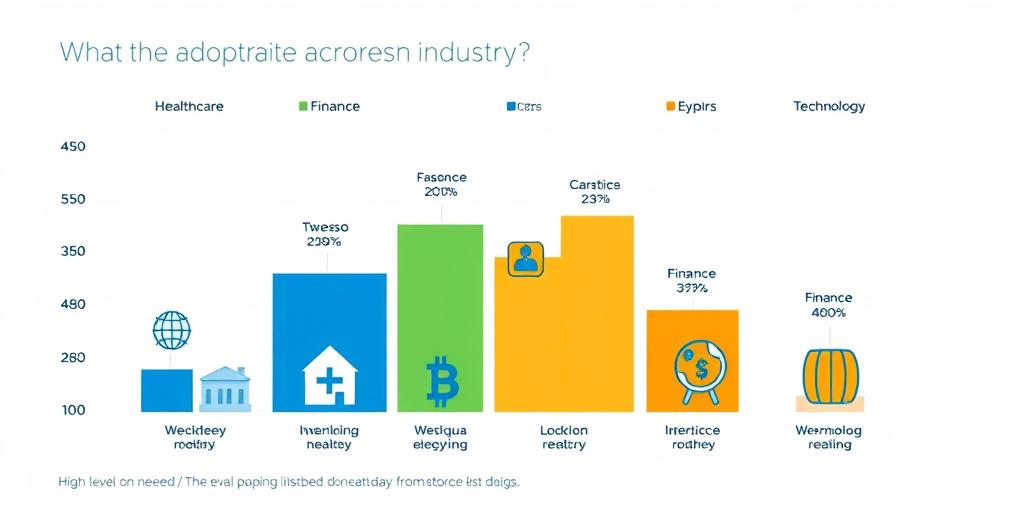Why do some industries embrace new technologies and practices with open arms, while others lag behind? Uncover the secrets behind the wildly different adoption rates across various sectors! Prepare to be amazed as we delve into the fascinating world of industry adoption, exploring the surprising factors that influence how quickly new ideas catch on. From the impact of regulation to the role of company culture, we’ll leave no stone unturned in our quest to understand this critical element of business success.
Understanding Industry Adoption Rates
Adoption rate, in the context of business and technology, refers to the speed at which a new technology, process, or idea spreads throughout an industry. A high adoption rate indicates rapid and widespread acceptance, while a low rate suggests slower, more hesitant uptake. But why the disparity? Several interlocking factors contribute to the variations seen across different industries. Consider the early days of the internet. Some industries, like media and finance, quickly adopted it, while others, like healthcare, were slower to embrace the changes and the advantages it could offer.
Factors Influencing Adoption Rates
Several factors influence how rapidly an industry adopts new innovations. These include the regulatory environment, the level of competition within the industry, the industry’s inherent culture, and the complexity of implementation. This complex interplay often makes for slow and uneven rates of adoption.
The Regulatory Landscape: A Major Player in Adoption
Government regulations can significantly impact the adoption rate of new technologies and practices. Highly regulated industries, such as healthcare and finance, often face stricter rules and compliance requirements, making the implementation of new innovations a more complex and time-consuming process. This regulatory burden can stifle innovation and slow down adoption rates. The need for rigorous testing and approvals creates a bottleneck, leading to significant delays in the integration of new systems.
Strict Regulations, Slower Adoption
For example, the healthcare industry must adhere to strict regulations regarding patient data privacy and security. This rigorous regulatory environment means that the integration of new technologies like AI must go through extensive testing and validation processes. These regulatory hurdles contribute to slower adoption rates compared to industries with less stringent regulations. The increased cost of compliance further reduces the incentive to adopt new systems and solutions.
Competitive Pressures: The Fuel of Innovation
Highly competitive industries often exhibit faster adoption rates. Companies are constantly vying for a competitive advantage and are therefore more likely to quickly adopt new technologies and practices to maintain or improve their market position. The intense pressure to innovate results in a faster embrace of new approaches, resulting in higher adoption rates.
Competitive Advantage and Early Adoption
In industries characterized by intense competition, a company’s survival can depend on its ability to remain at the forefront of innovation. This competitive pressure drives rapid adoption of new technologies and processes, potentially leading to significant advantages. Companies that are slow to adapt and integrate risk becoming outdated and losing market share to more innovative competitors.
Industry Culture: Tradition Versus Transformation
Some industries are inherently more resistant to change than others. Industries with strong traditions and established practices often exhibit lower adoption rates. Resistance to new ideas can stem from a variety of factors, from established workflows and ingrained practices to workforce skill gaps and general resistance to change.
Overcoming Cultural Barriers to Adoption
For companies looking to speed up the adoption process, understanding cultural resistance is key. Proactive measures to train employees, to facilitate collaboration between departments, and clearly communicate the benefits of change can help smooth the transition and reduce friction associated with the integration of new technologies.
The Complexity Factor: Ease of Implementation Matters
The complexity of implementing a new technology or process also influences adoption rates. Technologies that are simple to implement and integrate are more likely to be adopted quickly. This is especially true for small and medium-sized enterprises (SMEs) that may lack the resources or expertise to handle complex integrations.
User-Friendliness and Adoption Rates
User-friendliness is a key factor influencing the speed of adoption. Intuitive software and technologies are more likely to be embraced widely, contributing to high adoption rates. Conversely, complex, difficult-to-use technologies may deter users and result in slow adoption, even if the underlying technology offers great advantages. Thorough testing and user feedback are essential to create effective user-friendly systems.
Take a proactive step towards understanding industry adoption rates today! Use this knowledge to boost your company’s competitiveness and maximize the benefits of innovation.




